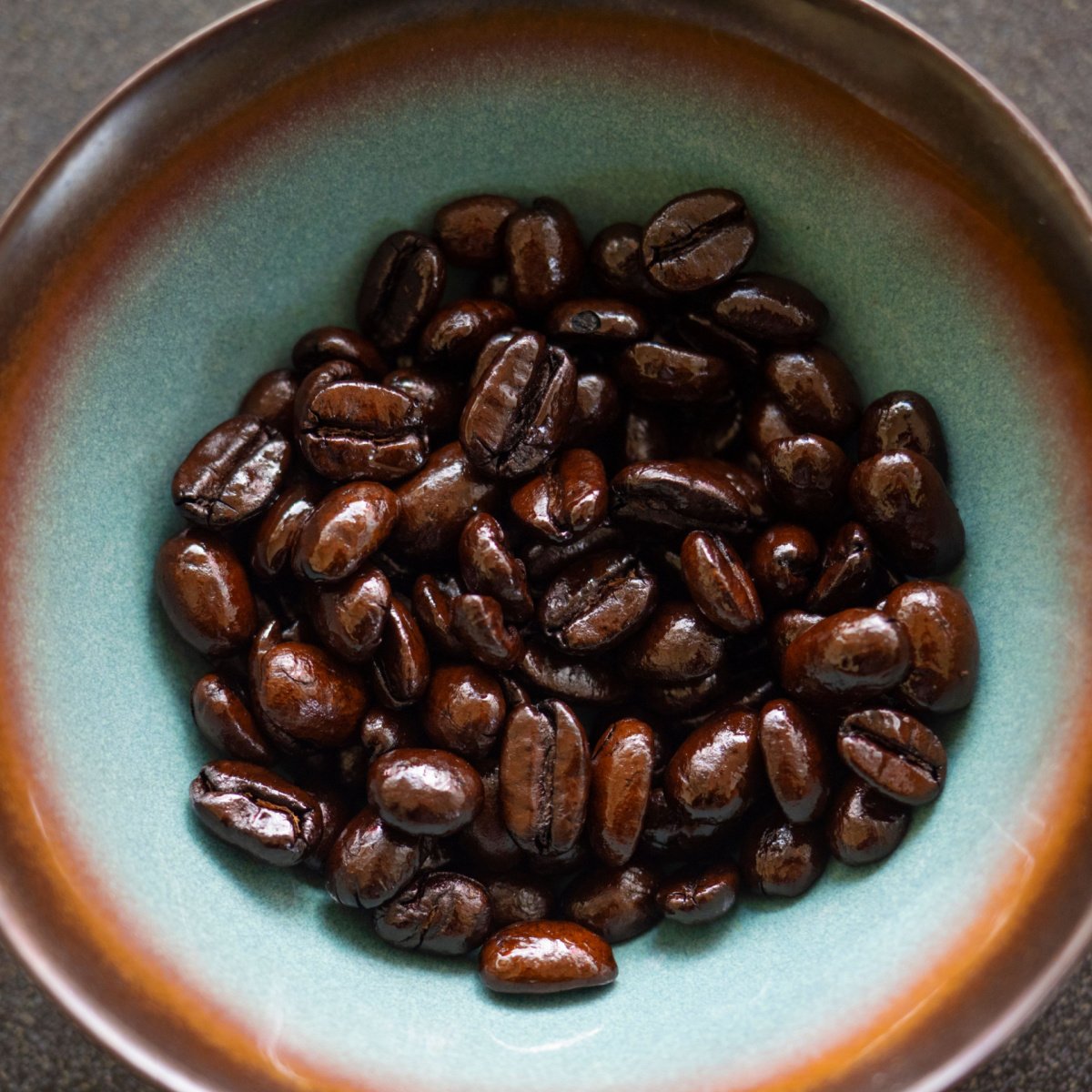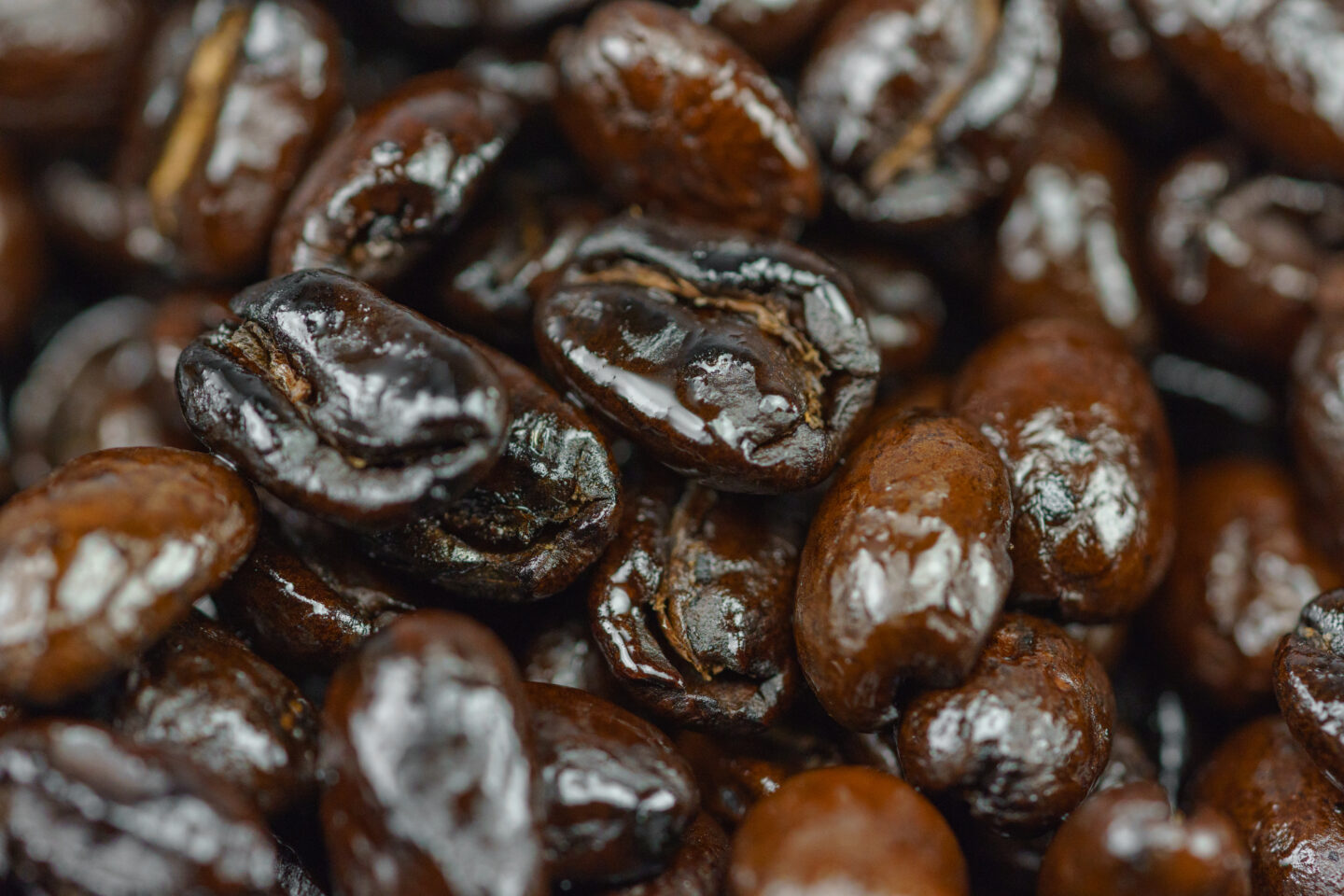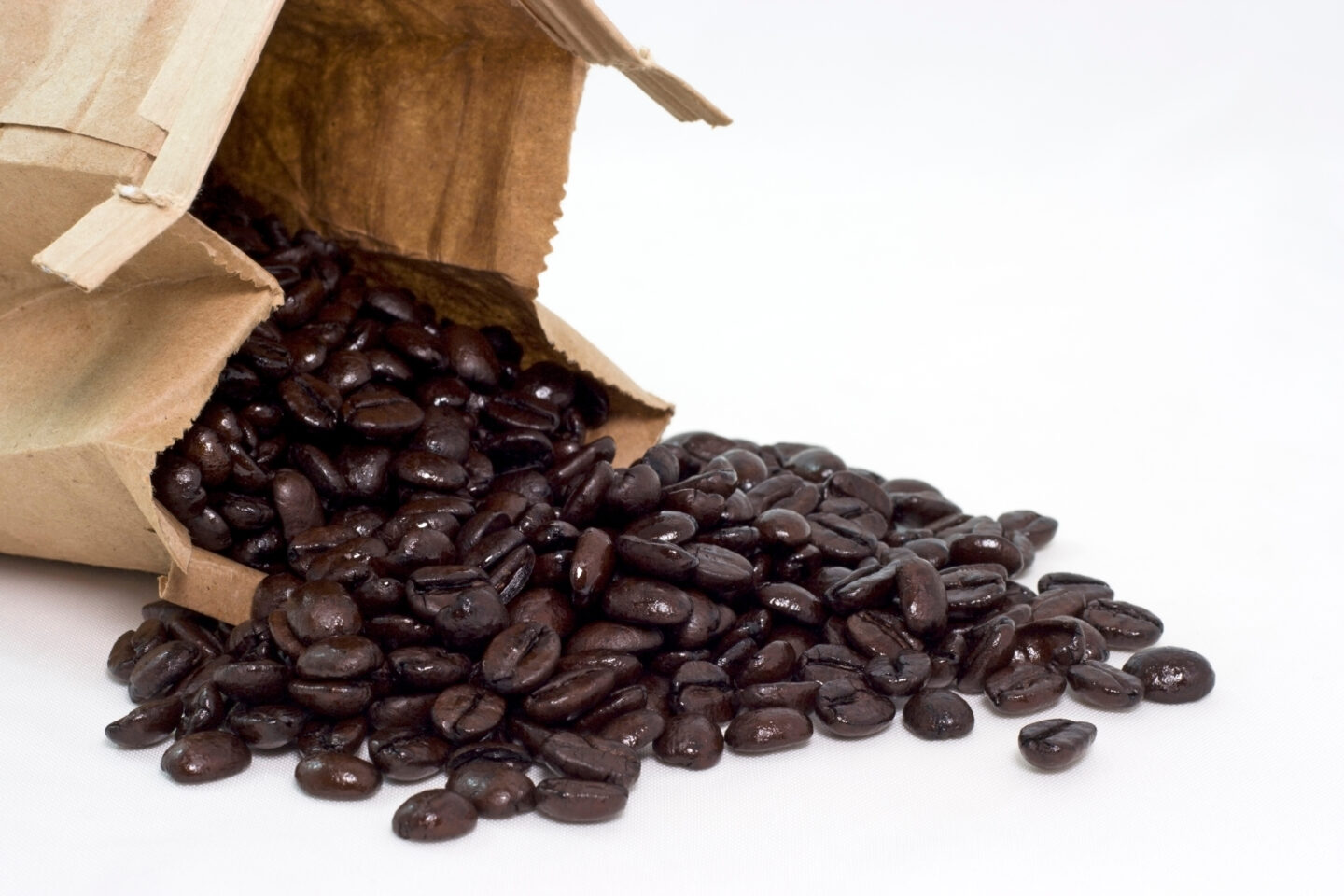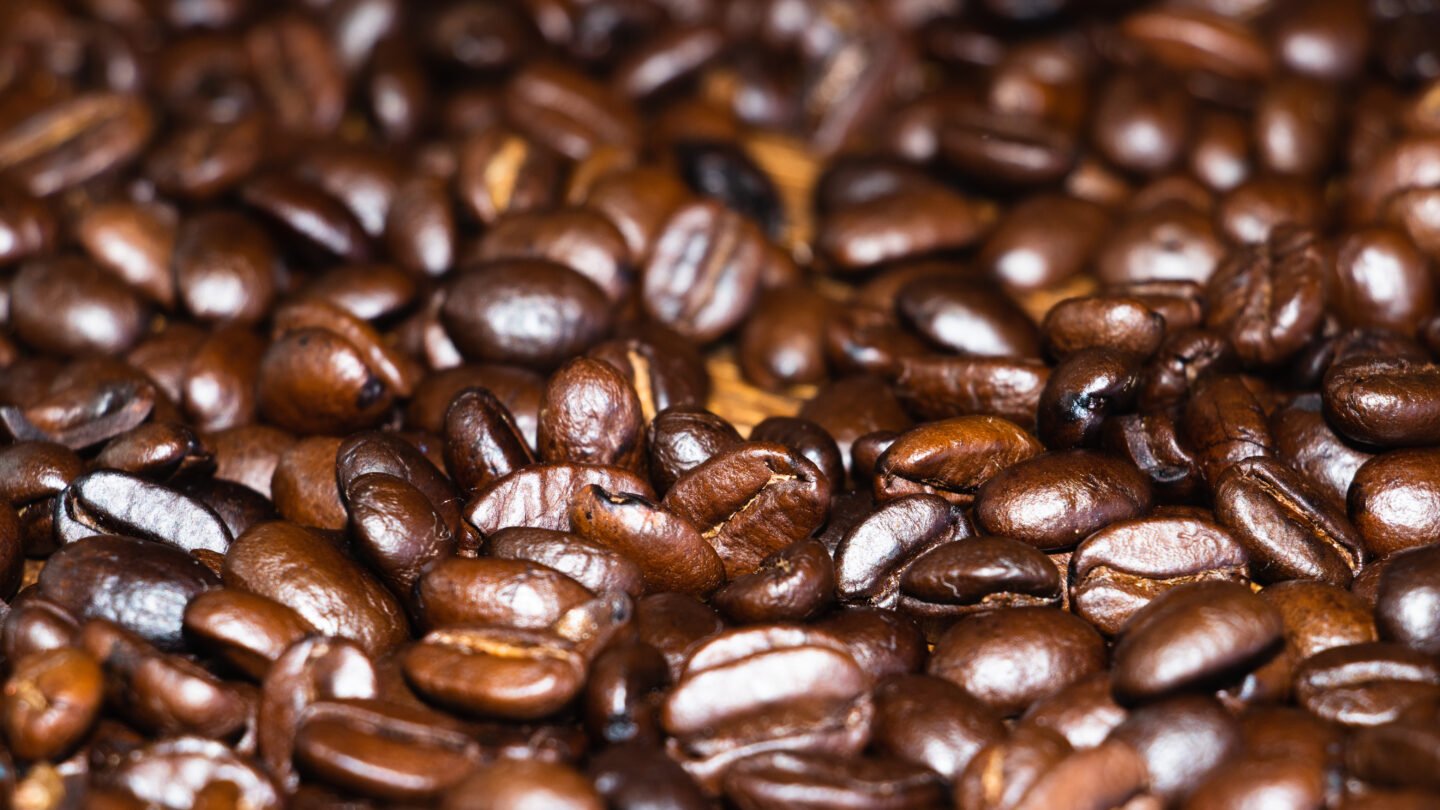We’ve all been there: you open up a new bag of coffee beans and see they are super oily. Maybe you’ve even wondered if you got a bad batch.

Don’t worry—oily coffee beans are fine. All coffee beans have oils in them, and sometimes those oils are brought to the top.
Let’s go a bit deeper into the world of oil coffee beans and discuss exactly what is happening.
Table of Contents
Is Oily Coffee Bad?
Oily coffee is not necessarily bad. However, you should pay attention to the bean quality and brewing method to ensure that the coffee tastes good.
The oil in coffee beans gives coffee its flavor and aroma, so it is normal for coffee to have some oil on the surface after brewing.
In fact, some people prefer slightly oily coffee beans because they give the coffee a richer, more full-bodied flavor.
Oily beans are generally associated with dark roast coffee.

If the coffee is excessively oily, it might indicate that the beans were over-roasted. Or, it could also mean that the coffee was brewed using a method that extracted too much oil.
In these cases, the coffee might taste bitter or burnt, which is generally undesirable.
Pro Tip: All coffee has similar amounts of oils. The roasting process is what brings out those oils. The oils are still trapped in the bean in light or medium roast coffees. Dark roast coffees bring the oils to the surface.
How Do You Dry Oily Coffee Beans?
You can’t get rid of the oily surface, but you shouldn’t want to get rid of the coffee oils completely.
After all, those oils are where the flavor of the coffee lies. Getting rid of the oils will result in a flat and flavorless brew.
If you really want to get rid of some of the oils, or if you find that the flavor of the dark roast is simply too much, there is one thing you can do.
You can mix your oily dark roast with a light roast or a medium roast to help dry out some of the oils and smooth out the taste of the coffee.
However, doing this will mean you lose some of the unique flavors and profiles you would otherwise get in a light or medium roast.
How Do You Identify Oily Coffee?
It’s generally pretty easy to tell when a coffee bean is oily. Of course, the first thing to do is open up the bag.

Here are a few different ways to identify oily coffee beans:
- Appearance: Oily coffee beans will often have a shiny, glossy appearance due to the oil on the surface of the beans. This can be more noticeable in dark roast beans, which tend to have a higher oil content.
- Touch: Oily coffee beans will often feel slick or greasy to the touch.
- Smell: Oily coffee beans will often have a strong and rich aroma. This can be a good indicator of the quality of the beans.
- Taste: Oily coffee beans will often have a full-bodied, rich flavor.
It is worth noting that all coffee beans will have some oil on their surface, as the oil gives coffee its flavor and aroma.
However, the amount of oil on the beans can vary, and excessively oily beans may indicate that the beans were over-roasted or that the coffee was brewed using a method that extracted too much oil from the beans.
How To Prevent Oily Coffee?
The truth is you can’t prevent oily coffee beans. All coffee has oils in the beans, and the roasting process brings those oils to the surface.
However, there are a few ways to avoid getting excessively oily coffee beans.
Here are a few ways to go about it:
- Use high-quality, fresh beans: Freshly roasted beans will have less oil on their surface than beans stored for longer.
- Store beans properly: Proper storage of coffee beans can help to prevent them from becoming excessively oily. Keep the beans in an airtight container in a cool, dry place, away from direct sunlight and moisture.
- Use the right brewing method: This has a little more to do with oily coffee after it brews, but it’s good to mention it anyway. Different brewing methods can extract different amounts of oil from the beans. For example, a French press or an espresso machine can extract more oil from the beans than a drip coffee maker.
- Adjust the roast level: Or simply buy a lighter roast. The roast level of the beans can also affect the amount of oil on the surface of the beans. Dark roast beans tend to have more oil on their surface than light roast beans, so adjusting the roast level can help control the beans' oiliness.
Overall, using high-quality, fresh beans and storing them properly, choosing the right brewing method, and adjusting the roast level as needed can help you stay away from beans that are too oily.
Are Oily Coffee Beans Bad For Your Grinder?

Oily coffee beans can be more challenging to grind than dry beans, and they can cause problems for some grinders.
Here are a few things to consider:
- Blade grinders: Blade grinders use a spinning blade to chop the beans, and they are not well suited for grinding oily beans. The oil from the beans can coat the blade and make it difficult to grind the beans evenly, resulting in a less consistent grind. In addition, the oil can accumulate on the blade and create a breeding ground for bacteria and mold.
- Burr grinders: Burr grinders use two rotating burrs to crush the beans. Thus, they are generally better equipped to handle oily beans than blade grinders. However, the oil from the beans can still cause problems with some burr grinders, particularly if the burrs are not kept clean. The oil can accumulate on the burrs and can cause them to become less effective as the oil builds up.
Overall, it is generally best to avoid grinding excessively oily coffee beans, as they can be more challenging to grind and potentially cause problems for your grinder.
If you need to grind oily beans, keep the grinder clean and monitor its performance to ensure that it is functioning properly.
Final Thoughts
Oily coffee beans are not harmful and shouldn’t be of any concern.
However, it is worth noting that oily coffee beans are generally associated with a darker roast. Excessively oily coffee beans might be a sign of over-roasting.
You shouldn’t worry about drying oily coffee beans and shouldn’t want to. The oils in coffee beans are where all the flavor is!
Next time you open a bag and receive oily coffee beans, try them out first!

Leave a Reply